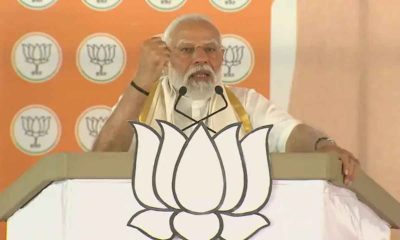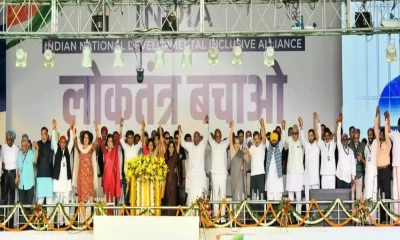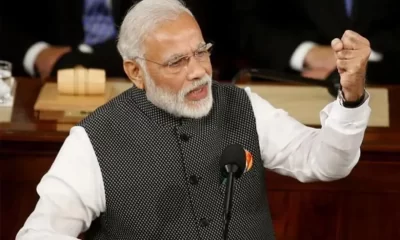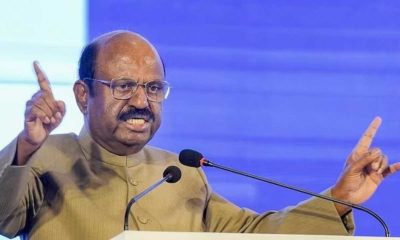Latest business news
India’s growth rate overestimated by 2.5%, says study by former chief economic advisor
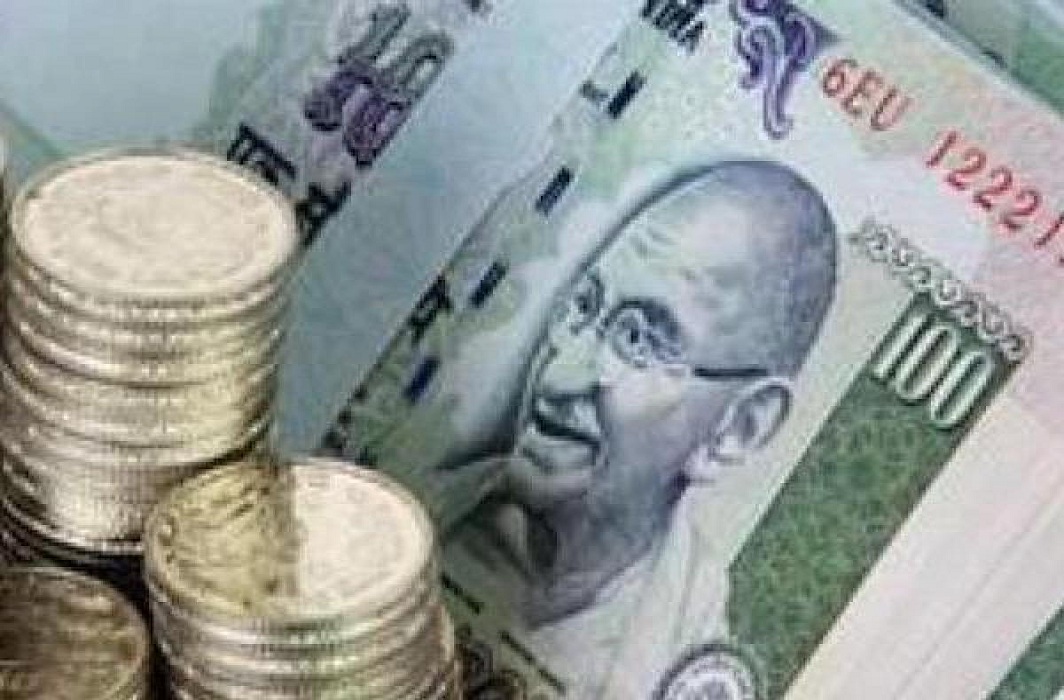
[vc_row][vc_column][vc_column_text]A new study by none less than India’s former Chief Economic Advisor Arvind Subramanian may have punctured India’s much vaunted status as world’s fastest growing economy.
Titled India’s GDP Mis-estimation: Likelihood, Magnitudes, Mechanisms, and Implications, Subramanian’s working paper for the Center for International Development at Harvard University, US, is critical of Indian statisticians and the way India’s GDP growth has been estimated after 2011-12.
It says the expansion was overestimated by as much as 2.5 per cent between 2011 and 2017, that is, during UPA-2 and Prime Minister Narendra Modi’s first term. Rather than growing at about 7% a year in that period, growth was about 4.5%.However, it doesn’t break this down by year.
But this means India’s claim of being the world’s fastest-growing major economy may not have been true.
“The Indian policy automobile has been navigated with a faulty, possibly broken, speedometer,” says Arvind Subramanian, who was Chief Economic Adviser for Prime Minister Narendra Modi’s government between 2014 and 2018. He asserts that the overestimation is not political.
“My new research suggests that post-global financial crisis, the heady narrative of a guns-blazing India – that statisticians led us to believe – may have to cede to a more realistic one of an economy growing solidly but not spectacularly,” Subramanian wrote in The Indian Express, attributing the overestimation to “methodological changes”.
The previous Congress-led government changed the methodology in calculating gross domestic product in 2012. One of the key adjustments was a shift to financial accounts-based data compiled by the Ministry of Corporate Affairs, from volume-based data previously. This made GDP estimates more sensitive to price changes, in a period of lower oil prices, according to the research paper. Rather than deflate input values by input prices, the new methodology deflated these values by output prices, which could have overstated manufacturing growth.
Also Read: Cyclone Vayu to hit Gujarat on June 13 morning, delay northward progress of monsoon
Subramanian carried out an experiment, one that many other economists have also been doing for India: he made an index of other data sources that could reflect what is happening in the actual economy, such as electricity consumption, two-wheeler sales, index of industrial production and so on. None of these were figures that came from the Central Statistical Office, which compiles the GDP statistics.
Subramanian’s index found that these indicators tend to move closely in step with the GDP number between 2001-’02 and 2011-’12. But from 2011-’12 to 2016-’17, there are huge gaps between them. The paper uses various methods, including indicators from India and other countries, to test mis-estimation in growth, all of which confirm the belief that GDP growth was over-estimated.
Subramanian insists that the paper is only the start, and much more research needs to be done. But, in looking at the data, he does offer one explanation for why the new methodology of calculating GDP might have thrown out bad data.
Based on the experiment, Subramanian finds that before 2011, the official estimates of manufacturing move along with other indicators, like the index of industrial production. But under the new methodology, this connection is completely broken.
The reasons for this are more complicated but, to put it simply, the paper suggests that the new GDP methodology does not properly take into account how changes in global oil prices (and possibly other “input” commodities) might affect actual figures. Ultimately, this means that the new GDP methodology has a completely flawed understanding of manufacturing numbers.
But this only explains about a 1 percentage point of the overall 2.5 percentage point over-estimation. More research is needed to understand what else is going wrong.
Subramanian points out that this isn’t just a matter of denting India’s reputation. Bad data would also affect policymaking For example, the Reserve Bank of India might have cut interest rates much earlier if it was known that GDP growth was that much lower, and the government might have moved much quicker to resolve the banking crisis or agricultural concerns.
According to the former top economic adviser, the popular narrative has been one of “jobless growth”, hinting at a disconnect between fundamental dynamism and key outcomes. “In reality,weak job growth and acute financial sector stress may have simply stemmed from modest GDP growth. Going forward, there must be reform urgency stemming from the new knowledge that growth has been tepid, not torrid; And from recognising that growth of 4.5 per cent will make the government’s laudable inclusion agenda difficult to sustain fiscally.”
Also Read: AN-32’s wreckage found in Arunachal Pradesh eight days after it went missing
Dr Subramanian explains that when he was working with the government, he had grappled with conflicting data and “raised doubts frequently” with the government. “But the time and space afforded by being outside government were necessary to undertake months of very detailed research, including subjecting it to careful scrutiny and cross-checking by numerous colleagues, to generate robust evidence,” he says.
The paper has three recommendations for what India needs to do:
India must “restore growth as a key policy objective”.
India must “restore the reputational damage suffered to data generation,” not only by giving statutory independence to the National Statistical Commission (which currently has no independent members) but also by hiring people with “stellar technical and personal reputations”.
The entire methodology and implementation for GDP estimation must be revisited by an independent task force, comprising both national and international experts, with impeccable technical credentials and demonstrable stature.
On the other hand, the politically appointed NITI Aayog was seen as interfering with India’s statistical operations. Recently, word has emerged that the BJP is thinking about a new law to merge the main bodies that work on statistics, potentially undermining their independence.
[/vc_column_text][/vc_column][/vc_row]
Latest business news
Google restores delisted Indian apps after government intervention
Google on Saturday restored all Indian apps it had removed.

Google has started to restore all the delisted Indian mobile apps on Play Store agian, which they had removed due to a disagreement over service fees. After a discussion between company representatives and IT Minister Ashwini Vaishnaw, the decision was made, according to sources.
The step was taken in response to Vaishnaw’s strong statement in which he said that it is not allowed for apps to be removed from the Google Play Store. The minister had said, India is very clear, our policy is very clear…our startups will get the protection that they need.
Vaishnaw continued saying that he has already given Google a call. They will be speaking with the app developers who were delisted this week. This is not acceptable. The minister said this kind of delisting cannot be permitted.
Ten Indian companies’ apps were banned by Google on Friday, causing outrage in one of its fastest-growing markets. With 94% of phones running on its Android platform, Google holds a large portion of the Indian market. Popular names like Naukri and Bharatmatrimony were on the list.
The main point of contention is Google’s in-app purchase fees, which range from 11% to 26%. Indian startups have long opposed the US tech giant’s actions, believing them to be unfair.
The founder of Bharat Matrimony, Christian Matrimony, Muslim Matrimony, and Jodii, Matrimony.com, expressed shock at the matchmaking apps’ removal from the Google Play Store.
Shaadi. Com CEO Anupam Mittal described it as a dark day for India’s internet, highlighting the possible broad effects on matchmaking services. He also called Google an evil.
While, Kuku FM Co-founder Vinod Kumar Meena in a statement had said that Google was behaving like a monopoly.
Meanwhile, Google temporarily withdrew the famous Indian payments app Paytm from the Play Store in 2020, claiming a few policy infractions. Due to this decision, the founder of the company as well as the larger startup community came together to build their own app stores and file lawsuits against Google.
Latest business news
Anant Ambani says he is 100% lucky to get Radhika Merchant in his life
Anant Ambani said he was grateful to get Radhika as his life partner. He said he is 100% lucky to get Radhika Merchant in his life. He said every day he is falling more and more in love with her. He added although he had known Radhika for the last 7 years, it felt he had met her only yesterday. He thanked Radhika for everything.

Anant Ambani and Radhika Merchant’s grand three-day wedding celebrations began with a glamorous cocktail night on Friday in Jamnagar. During the celebrations, Anant Ambani also gave a speech wherein he thanked his late grandfather Dhirubhai Ambani and grandmother Kokilaben Ambani for inspiring him. Anant Ambani said he was grateful to get Radhika as his life partner. He said he is 100% lucky to get Radhika Merchant in his life. He said every day he is falling more and more in love with her.
He expressed his gratitude to his mother for pulling together the lavish three-day wedding celebrations in Jamnagar. Anant thanked his mother for all she had done. He said all the arrangements had been done by his mother and nobody else. He added his mother had gone all out and she had worked 18-19 hours a day and he was extremely grateful to her.
He also thanked all the guests who were present there at the pre-wedding celebrations. He said everyone had made it to Jamnagar to make him and Radhika feel special. He said both of them were honored and humbled to have all of them present there. Anant said he was sorry if they had caused an inconvenience to anyone. He asked for forgiveness. He hoped everyone is going to enjoy the coming three days. He also thanked his mother, father, sister, brother, his sister-law and his brother in-law for making this event memorable.
Anant said everyone has been sleeping for less than 3 hours a day for the last 2-3 months and he was very happy to share this joy with everyone. The youngest Ambani talked about his personal struggles and how his parents had always supported him. He further added his life had not been entirely a bed of roses. He said he had also experienced the pain of thorns. He said he had faced many health crises.
Latest business news
Facebook chief Mark Zuckerberg shares pictures from 2nd day of Anant Ambani and Radhika Merchant pre-wedding celebrations
Zuckerberg shared pictures from the 2nd day of Anant Ambani and Radhika Merchant’s pre-wedding celebrations. In the photograph Mark Zuckerberg can be seen along with his wife Priscilla Chan. The couple is exuding happiness as they prepare for the event. He captioned the picture it is getting wild out here.

Facebook boss Mark Zuckerberg and wife Priscilla Chan joined the star- studded pre-wedding celebrations of Anant Ambani and Radhika Merchant in Jamnagar on Friday. The event was attended by many prominent figures from different fields. Zuckerberg took to his Instagram handle congratulated the couple and said he loved Indian weddings.
Zuckerberg shared pictures from the 2nd day of Anant Ambani and Radhika Merchant’s pre-wedding celebrations. In the photograph Mark Zuckerberg can be seen along with his wife Priscilla Chan. The couple is exuding happiness as they prepare for the event. He captioned the picture it is getting wild out here.
The theme of the opening day of the pre-wedding celebrations was Evening in Everland as the guests wore cocktail attire. The first day of the grand celebrations elevated the expectations of the guests for the following days. The theme of the 2nd day of the pre-wedding bash is known as a Walk on the Wildside and the guests can be seen in Jungle Fever attire.
Zuckerberg has opted for an animal print shirt with white trousers, Chan is complementing his look in a strappy one piece in black and golden. The Jungle theme is aligned to Vantara, Reliance’s animal welfare initiative undertaken and launched by Anant Ambani a few days back.
International pop star Rihana electrified the pre wedding celebrations on Friday with an amazing performance, marking her debut appearance in India. The chart topping artist engaged the audience with performances of her iconic hits which included Pour it Up, Work and Diamonds.
Zuckerberg graced the opening day, wearing a black-on-black firefly blazer and shoes from Alexander McQueen while his wife Priscilla wore a black gown with gold flower details and other accessories such as dainty chain bracelet, gold necklace and stud earrings. Mark Zuckerberg and wife Priscilla Chan are one of the Power couples invited from the global business community for the festivities currently underway at Jamnagar.
-

 Cricket news11 hours ago
Cricket news11 hours agoIPL 2024: Jos Buttler’s unbeaten century helps Rajasthan Royals chase down 224 against Kolkata Knight Riders
-

 Latest world news7 hours ago
Latest world news7 hours agoDubai sky turns green during storm in UAE, video goes viral
-

 India News11 hours ago
India News11 hours agoPM Modi greets nation on Ram Navami, says Ayodhya is in incomparable bliss
-

 Entertainment10 hours ago
Entertainment10 hours agoAmitabh Bachchan to receive Lata Deenanath Mangeshkar award, AR Rahman, Randeep Hooda to be honored
-
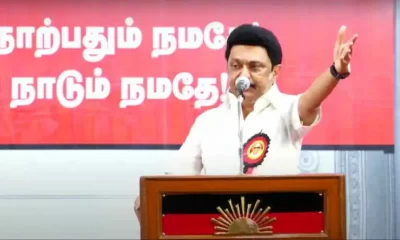
 2024 Lok Sabha Elections9 hours ago
2024 Lok Sabha Elections9 hours agoMK Stalin says if Prime Minister Narendra Modi comes to power again, the country would go back by 200 years
-

 India News8 hours ago
India News8 hours agoPM Modi chants Jai Shri Ram in Assam rally, shares visuals of Ram Lalla’s Surya Tilak, says emotional moment for him
-

 Cricket news7 hours ago
Cricket news7 hours agoKKR captain Shreyas Iyer fined Rs 12 lakh for slow over rate in match against RR
-

 2024 Lok Sabha Elections6 hours ago
2024 Lok Sabha Elections6 hours agoMamata Banerjee accuses BJP of plotting riots on Ram Navami

